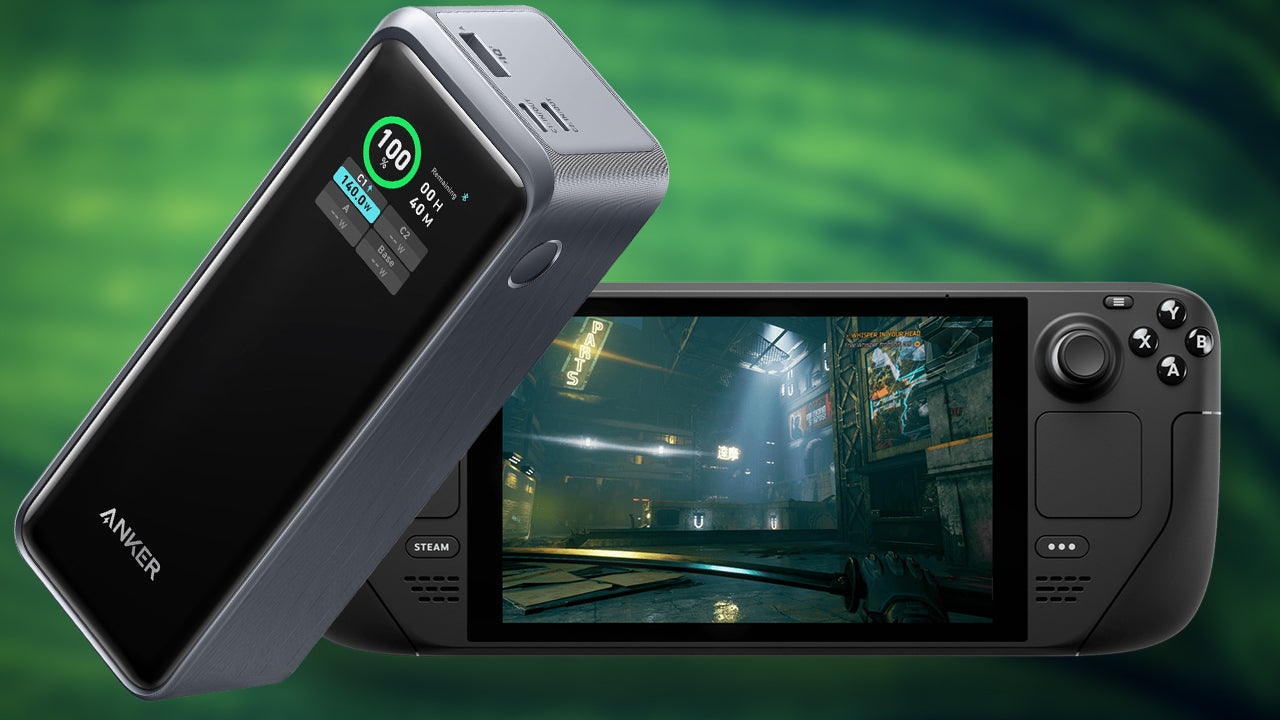I’ll cut straight to the chase: the Meta Quest 3 is the best standalone, consumer-oriented VR headset you can get right now. With a slimmer design, sharper display, more powerful processor, full-color passthrough for mixed-reality gaming, and better controllers, the Quest 3 is clearly a superior headset when compared to its three-year-old predecessor. All those upgrades, though, don’t come cheap. The Quest 3 is priced at $499 for the 128GB model and $649 for 512GB. Comparatively, the Quest 2 starts at only $299 for its 128GB model – and for newcomers to VR who don’t want to go all in with their wallet just yet, it’s still a wonderful option. But for everyone else, the Quest 3 and all of its current-gen tech easily justify the cost.
Meta Quest 3 – Design and Features
The Meta Quest 3 arrives in a deceptively small, rather spartan looking box. I don’t mind because I’d rather not spend extra money on fancy packaging. The contents include the headset itself, a pre-installed foam facial interface, two Touch Plus controllers with pre-installed wrist straps and AA batteries, an 18W power adapter, and a USB Type-C charging cable for the headset itself.
The first thought that came to mind when unboxing the Quest 3 was just how similar it looked to the Quest 2. Meta claims that the Quest 3 is 40% slimmer, but if you look at the fine print you’ll see that the comparison excludes the facial interface, which is thicker on the Quest 3. There’s no weight savings either, unfortunately; I weighed my Quest 3 visor without the strap at 459 grams, which is actually three grams heavier than a strapless 2.
On a positive note, the ergonomics have been improved. The Quest 2 isn’t the most comfortable headset for long gaming sessions because the facial interface is pressed against your temples and cheeks, which isn’t nearly as comfortable as the PS VR2’s halo-style head strap that rests on top of your head. The Quest 3 still mounts the same way as the 2, but it protrudes out from your head by about an inch less than before, which means it feels less front-heavy. The soft, cloth head strap has also been redesigned so that it’s easier to adjust, and it does a good job of keeping the headset firmly in place without applying too much pressure – even during intense Beat Saber sessions. If you want to swap it out for a more robust, hard plastic alternative, the Elite Strap will run you another $70.

Meta listened to user complaints about the limited IPD adjustability on the Quest 2, which only has three specific IPD stops (58mm, 63mm, and 68mm). The Quest 3 now offers continuous IPD adjustment, which ranges from 58mm to 70mm, easily manipulated by a little rotary dial on the bottom of the visor.
The Quest 3 also lets you adjust the depth of the facial interface, or how far from your face the screen is. I simply set it to the shortest depth to get the maximum 120-degree FOV, but if you wear glasses for VR you’ll appreciate the extra space. The aggressively-curved facial interface means that there’s also a good amount of light spilling in from the nose bridge; you’ll have to deal with it for the time being because Meta currently doesn’t sell a full light blocker like it does with the Quest Pro. The facial interface is lined with a foam padding that, although is comfortable, will absorb your sweat like a sponge. That’s a sanitation issue because the padding isn’t removable; you have to detach the entire plastic facial interface, so you can’t just toss it into the washer. Meta does sell a facial interface with an easier-to-clean silicone cover pre-attached, but you’ll have to pony up another $30 to get it.
The Quest 3 sports dual 2064x2208 LCD displays – that’s 30% more pixel density than the Quest 2 – and the result is, as you’d expect, improved visual clarity. You can see it most clearly with textual elements like in-game huds, menus, and virtual browsers, and with technically demanding games like Microsoft Flight Simulator when you’re tethered to your PC. We’re not quite living the dream yet, since it could definitely be sharper (as compared to my 4K PC monitor), but it does look better than any comparable headset.

This new version also addresses one of my biggest issues with the Quest 2’s optics, which is its narrow sweet spot. The center of the display is obviously sharper than the edges, and you have to wear your headset perfectly to get it focused. Fortunately, the Quest 3 does away with the Fresnel lenses found in the Quest 2 and adopts the pancake lenses first seen in the Quest Pro. Aside from being slimmer, the display boasts uniform edge-to-edge clarity and less lens glare. Other improvements to the optics include a wider 120 degree FOV for better immersion (less tunnel vision) relative to the Quest 2’s 90 degrees, and 120Hz support right at launch. In fast-moving games like Beat Saber, the ability to play at a higher frame rate really lends to ultra-smooth motion without any stuttering.
The audio system on the Quest 3 is similar to that found on the Quest 2, meaning it sits away from your ear. That said, it is not the same: there’s a lot less distortion than before, and the sound can be pumped up to a pretty deafening volume – it just means that, unlike with over-the-ear headphones or earbuds, people around you can hear a lot more of what’s going on. There’s also a 3.5mm audio jack so you can use wired earbuds or headphones for better noise isolation and spatial audio. Unfortunately, wireless bluetooth headphones still don’t work well because of the perceptible lag.
I drained out the battery multiple times during testing and got anywhere between one hour and 58 minutes to two hours and 12 minutes on a single charge. That’s not a very long amount of time, but unfortunately a bigger battery pack would have meant an even heavier headset. Oculus does sell a head strap with a rear-mounted battery pack that doubles your total playtime, but a better idea would be to clip a USB battery pack to your belt if you don’t want it weighing down your head. It takes about two and a half hours to fully charge the Quest 3 via the USB Type-C cable, since it only draws up to 18W of power at maximum. Nowadays there are plenty of mobile devices that can charge most of a battery’s capacity in less than 30 minutes and top off the rest over time. That would have been a nice feature for the Quest 3, in case you wanted to get an additional hour or so of gaming in without having to wait a while.
Meta Quest 3 – Setup
Setup is easy and straightforward. You’re no longer required to create a Facebook account (but you do need a Meta account, which is effectively the same but doesn’t come with a public page). After charging your Quest 3 for the first time, you turn it on and follow the steps to get connected to the internet and download all the firmware updates. You’ll need to install the Meta Quest app on your Apple or Android phone or tablet to pair your device, but afterwards you’ll probably never need to use it again unless you want to livestream the view from inside the headset to a screen for others to watch.

From there, the Quest 3 has you set up your choice of a stationary or room-scale boundary (which can be changed at any time). If you choose the room-scale option, the headset will automatically map out the room as you walk around. You can watch it happen in real time as little geometric shapes scale your floor, walls, ceiling, and furniture. It’s a good way of visually letting you know exactly which parts of your room haven’t been mapped yet; there were some nooks and crannies in my space that required a couple of passes for the cameras to register them. The headset does a good job of handling reflective and transparent surfaces like sunlit windows, glass tabletops, and even a fish tank.
Meta Quest 3 – Gaming and Performance
What sets the Quest 3 and its predecessors apart from almost every other headset out there is its ability to play games on its own, without relying on a PC or console. Meta provided several games to try out including Samba de Amigo, a rhythm based game where you shake your maracas to the beat of the music, Demeo Battles, a D&D-style isometric turn-based strategy game, and Islander, a simple yet deceptively addictive city builder. I also tried a couple of my own games that I’d brought over from my Quest 2, like Pistol Whip and Robo Recall: Unplugged. All of them ran flawlessly, with zero framerate dips.

The Quest 3 is equipped with a Snapdragon XR2 Gen 2 chip that’s up to 50% more powerful than the one found in the Quest 2, but games that are already released won’t be able to take advantage of the extra resources unless the developer releases an optimization update. The only game I was able to test is Red Matter 2, which developer Vertical Robot has already released a Quest 3 patch that includes 4K textures, dynamic resolution scaling, anisotropic filtering, dynamic shadows, and more. I compared the game post-patched on the Quest 3 and pre-patched on the Quest 2 and the difference is stark. The game exudes more polish than ever before. The in-game models, from the space station environments to all of the equipment you manipulate during the game, look much more sharp and detailed, even when you walk right up to them, and the new dynamic shadows add another level of realism. The only time I noticed any sort of performance hiccup was during the transition scenes when the game was loading in the next playable area. Red Matter 2 is a testament to what developers can do with the more powerful hardware, and I’m hoping more high caliber games will be updated in the near future.
Of course, you’ll have to keep your expectations in check – this is still a mobile device, after all, and it can’t keep up with a high-powered PC or PlayStation 5 when it comes to the details. But really, that’s okay. While the Quest 3’s games might be limited to relatively lower-poly models and lower-res textures, they still offer super interactive gameplay and VR mechanics that you can’t experience with a traditional game on a TV or monitor. Simply put, many of these games are exceptionally fun to play.
And there’s a very good chance you’ll find something you like, because the Quest 3 is fully backwards compatible with the more than 500 games that are already available for the Quest 2 –you won’t have to re-buy anything you already own. That’s a far cry from the PS VR2’s predicament, in which great hardware was crippled by the lack of a decent launch library and backwards compatibility.
On the other hand, it’s a real shame that Meta didn’t invest in a more compelling launch lineup for the Quest 3. Backwards compatibility is a wonderful perk, but even one fresh, new game that showcases all the improvements that the Quest 3 has to offer seems like a no-brainer, but there’s nothing new and flashy here. It’s a small consolation that the Quest Store will have a category of games that are certified to be “better on Quest 3” and take advantage of the enhanced specs.
To be fair, there are a couple of high-profile games coming out later this year: Assassin’s Creed Nexus VR will be available on November 16 and Asgard’s Wrath 2 will be released on December 15. So it’s not a total desert out there.
In the meantime, you can play VR games that aren’t available in the store on your Quest 3 by tethering it to a PC like a traditional PC-based VR headset. That can be done with an Oculus Link cable or wirelessly through AirLink. This allows you to flawlessly play SteamVR games, including two of the best VR games that aren’t available at the Oculus Store: Half-Life: Alyx and Microsoft Flight Simulator. Alyx worked immediately and looks absolutely amazing through the Quest 3’s optics, and the controllers function as if they were natively supported (Valve went out of its way to make Alyx work with any PC VR headset).
Microsoft Flight Simulator requires a little more effort in that you have to manually turn on VR mode in the in-game settings menu before putting on your headset, but that’s a small hoop to jump through. Note that you’ll definitely need a powerful rig to drive this game, but if you have one, you’re in for an extremely realistic-looking game. Flight Simulator gives you the option to overlay real satellite imagery over the terrain, and it looks incredible. I’m not a big fan of heights, and I actually felt queasy flying the prop planes over Bora Bora or Manhattan – and that wasn’t VR motion sickness.

New to the Quest 3 are two 4MP RGB cameras and a depth sensor embedded into the front of the visor that allow for the much-touted full-color passthrough feature, which you’ll see while on the Quest 3 home screen, in some mixed-reality-enabled games, and can be swapped to by tapping twice on the side of the headband. The clarity is a vast improvement over the Quest’s monochrome muddiness. In good lighting conditions, the image is bright and clear, with accurate, true-to-life colors. The litmus test is text clarity, and the image was just barely sharp enough for me to read and send messages on my phone or browse the internet on my PC. It’s definitely not the same resolution as in VR mode and there is plenty of room for improvement, but it’s still 10 times sharper (a ballpark figure) than the Quest 2’s passthrough mode.
Currently there aren’t very many games that make use of the passthrough tech, though. For the review, Meta only provided a single mixed-reality game, First Encounters, but it left a very strong impression. Colorful, tribble-like creatures burst out of your walls and ceilings, and it’s your job to capture all of them. It’s more of a tech demo than an actual game, but it was a strong showing of the potential of mixed-reality gaming. The Quest 3 did an excellent job of mapping out the room I was playing in, allowing its tribbles to jump around on my furniture, making the cracks in the walls really look like portals into another dimension, and the rocket ship to leave realistic-looking scorch marks on the surfaces that it landed on. Most importantly, the passthrough quality didn’t detract from the experience at all. I was never really a big fan of AR gaming before, but the Quest 3 just might have made me a convert.
Finally, you can’t talk about the Quest 3’s gaming performance without covering the new Touch Plus controllers. The most obvious change is that the Quest 3’s controllers have done away with the bulky IR rings we’ve seen on every previous Oculus and Quest controller. From an ergonomic standpoint, this was the right move. Without the rings, they’re the lightest VR controllers ever made, no longer top-heavy, and feel balanced in the hand. I weighed mine at a mere 104 grams each without the battery. As a comparison, the Quest 2 controllers weigh 128 grams, the PSVR 2 controller weighs 168 grams, the Valve Index knuckle weigh 196 grams, and the HTC Vive wand tip the scales at over 200 grams.

Also the rings were a structural weak point on the Quest 2. My controllers broke twice over the three years I’ve owned them, and I had to spend $120 on replacements. Without the rings, I expect the new Touch controllers to be more durable.
But what about tracking precision, which was the purpose of those rings? The new controllers use a combination of infrared LEDs, the cameras on the visor itself, and AI hand tracking technology that, according to Meta, is more accurate than the IR-only tracking on the Quest 2 controllers. I put that to the test with Beat Saber, a rhythm-based game where you slash at boxes that fly at you with two lightsabers. It’s a very simple mechanic that’s easy to pick up but incredibly difficult to master. I put several hours into the Expert Plus songs on Beat Saber, hoping to replicate any tracking problems I experienced on the Quest 2, and I failed to do so. Not once did I miss a note and feel like it was due to controller error. The Quest 2 had good tracking as well, but it was pretty easy to trick the headset by putting your hands behind your back or up close to your head. The Quest 3 does a far better job of handling these blind spots.
Like the Quest 2’s controllers, each Quest 3 controller is still powered by a single AA battery. That means you don’t have to worry about a non-removable battery losing its charge over the course of its life, and it doesn’t sacrifice longevity. Even after about 20 hours of use, I’m still on my first set. The battery compartment is also a lot easier to access. Instead of pressing down on the cover to push it free from the magnets holding it in place, you simply push a button and the door pops open.
Meta Quest 3 – The Competition
There are only two other VR headsets that offer both untethered and mixed reality gaming. The Oculus Quest Pro retails for $1,500 and the HTC VIVE XR Elite retails for $1,100. You might think $500 is a steep price for the Quest 3, but it’s a straight-up bargain compared to the competition, especially given its resolution outdoes them both.
Not surprisingly, the Quest 3’s biggest competition is its own predecessor. Meta has made it clear that it plans to continue supporting the Quest 2 for the foreseeable future, and it should – it’s still an excellent headset that lets you experience most of what VR has to offer at a pretty incredible price. Even now, there simply isn’t anything else that can compete.
The Quest 3, on the other hand, is priced closer to a few other VR headsets on the market, most notably the PSVR2 and the HP Reverb G2. But if you think about it, that’s not really true. The PS VR2 requires at the very least a $400 PlayStation 5 Digital Edition console to run it. The HP Reverb G2, likewise, requires a gaming PC, and that will probably cost closer to $1,000 or more. The PS VR2 has the advantage of better tech under the hood, but it’s hindered by a severely limited library of games that must be made specifically for the PS VR2. The HP Reverb 2 has inferior optics and lackluster controllers, even though it’s priced $100 more than the Quest 3. There are other headsets too, like the Valve Index and any of the HTC Vives, but their hardware is simply far too expensive and becoming far too dated to even compare.








